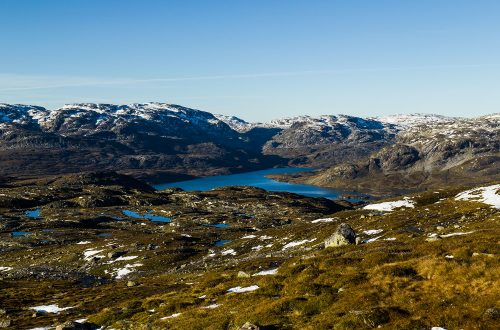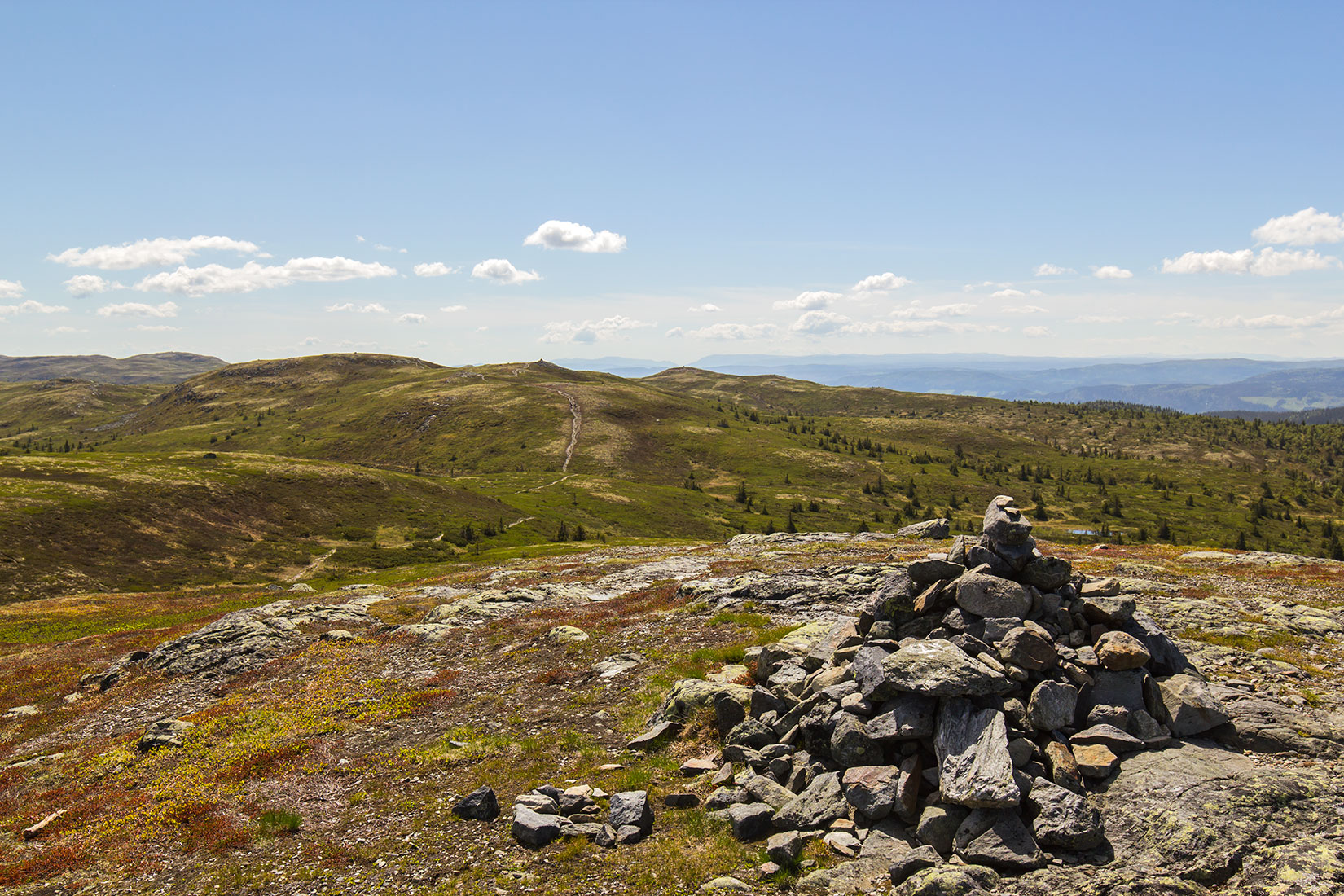
Lilletoppen
Wizyta na Lilletopp była jednym z głównych punktów programu, podczas mojej wizyty w Tyssedal. Zanim ruszyłem pod górę, zaszedłem zasięgnąć języka do muzeum Tysso I, gdzie otrzymałem instrukcje jak dojechać na niewielki parking. Dostałem również świstek uprawniający mnie do darmowego pozostawienia auta na wspomnianym parkingu. Droga prowadzi dokładnie tak samo jak trasa na parking przed tamę w Sjeggedal, skąd można dotrzeć na sławny Język Trolla. Jednak parking przy szlaku na Lilletoppen znajduje się dużo niżej. Niewielka zatoczka może pomieścić ze trzy auta, z czego jedno należy do przewodnika, urzędującego na górze. Jako, że było jeszcze dość wcześnie i byłem pierwszym odwiedzającym, miałem do dyspozycji pozostałe dwa miejsca postojowe. Alternatywą jest pozostawienie samochodu niżej, na parkingu przed halą sportową Tyssedal i nieco dłuższy spacer.
Na tę krótką wycieczkę założyłem buty FiveFingers marki Vibram, aby przetestować je w górskim terenie. Muszę przyznać, że sprawdziły się doskonale i można by pomyśleć o nieco dłuższych trasach w tego typu obuwiu. Sam szlak nie jest ani długi ani specjalnie wymagający. Dystans około 3 kilometrów można pokonać w jakieś 30 – 40 minut, poruszając się po dobrze utrzymanej leśnej ścieżce, która niekiedy biegnie odkrytym terenem po skale. dzięki temu na brak widoków po drodze nie można narzekać. W górnej części trasy, dochodzi się do imponujących rur przesyłowych, którymi przed laty spływała woda do elektrowni Tysso I.
W końcu doszedłem do celu. Ostatni etap wędrówki biegnie równolegle do pięciu rurociągów, które giną w betonowej zaporze pod jednym z budynków technicznych na Lilletopp. Zaszedłem do domku, w którym niegdyś mieszkał stróż. Tam spotkałem przewodnika, a raczej przewodniczkę, która po opłaceniu biletu w cenie 60 kr oprowadziła mnie po całym terenie. Byłem tego ranka jedynym zwiedzającym.
Obejrzałem najpierw od góry basen dystrybucyjny, skąd woda wpłwała przez ogromne zasuwy do rurociągów położonych na zboczu i spływała do elektrowni 400 metrów niżej. Basenem okazała się dość spora dziura, wydrążona w skale (zapewne z dużą pomocą dynamitu). W dolnej części basenu dostrzec można wlot tunelu, prowadzącego bezpośrednio z jeziora Ringedal. Przeszliśmy galerią nad basenem a moja przewodniczka wręczyła mi kask, mający chronić moją głowę podczas spaceru przez tunel. W tym miejscu przystanęliśmy na chwilę, oglądając panoramę miasteczka poniżej. Budynki, wzniesione ponad stulecie wcześniej, podczas prac nad uruchomieniem elektrowni wciąż tam stały, odrestaurowane i służące teraz juz innym mieszkańcom. Nadal jednak dało się rozróżnić okazałe rezydencje dyrektorstwa i administracji od domków robotniczych.
Przeszliśmy obok kolejki linowej, która kiedyś służyła do transportu materiałów budowlanych. Przewodniczka poinformowała mnie, że muzeum stara się przywrócić ją do życia ale boryka się z niewystarczającymi środkami finansowymi.

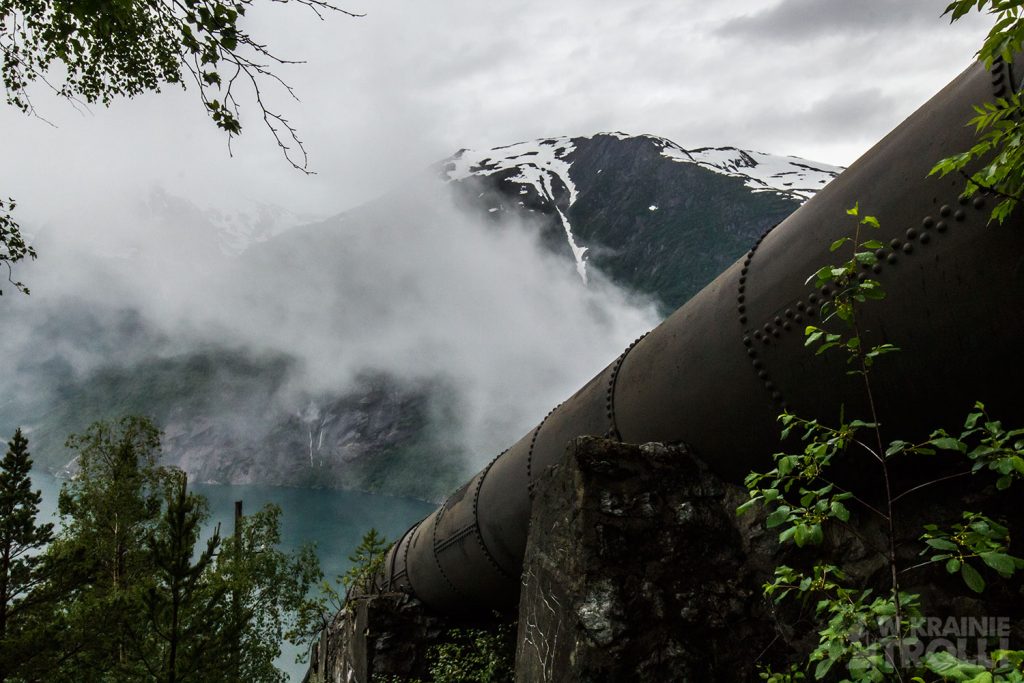
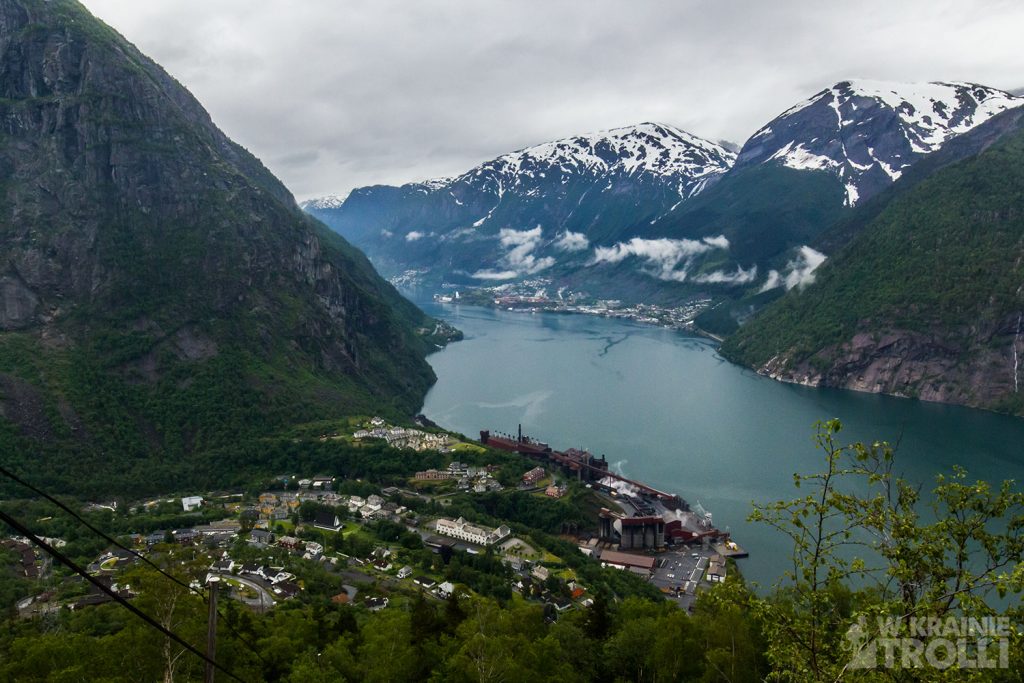

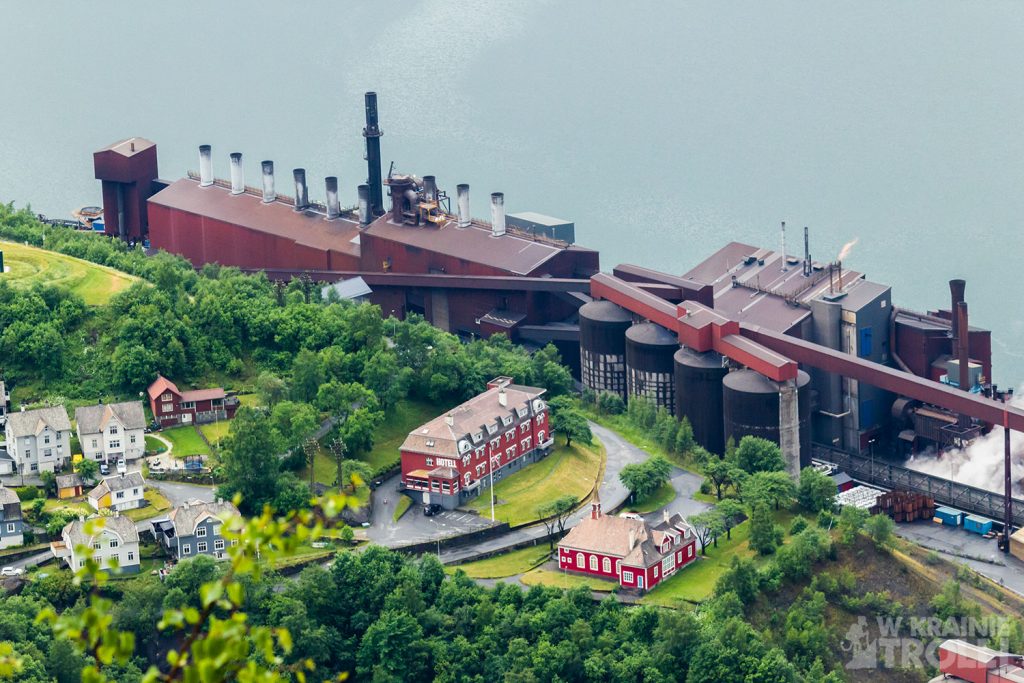
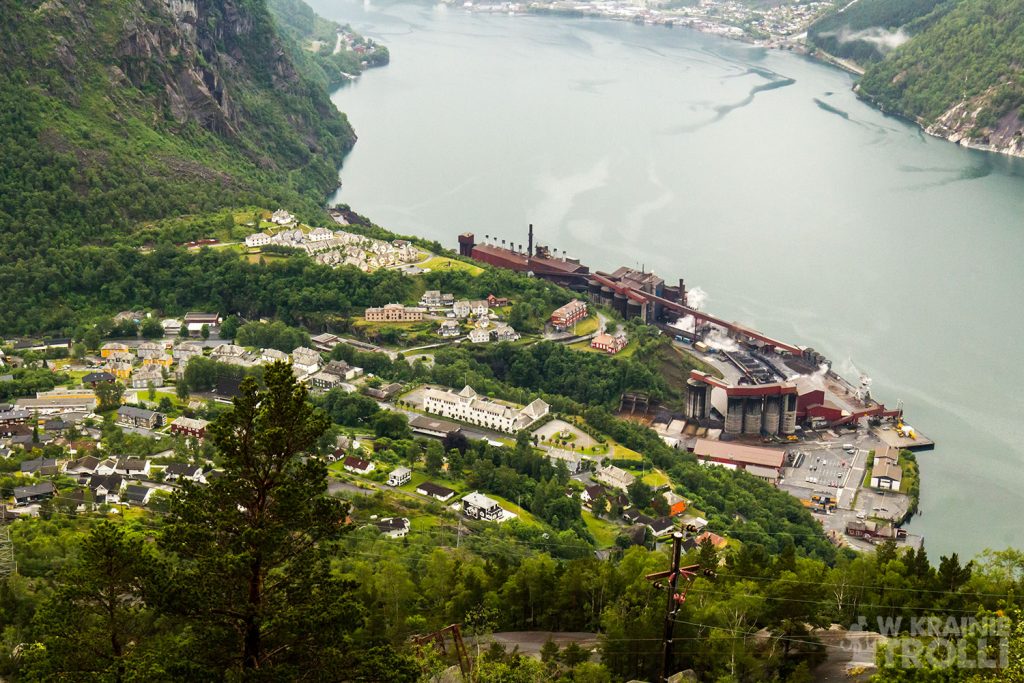

Wreszcie dotarliśmy do tuneli. A właściwie do jednego, którym mieliśmy przejść. W środku było ciemno, jednak zawieszony po jednej stronie sznur lampek umożliwił bezpieczne poruszanie się. Trasa wiodła wzdłuż basenu dystrybucyjnego, który można było obejrzeć tym razem od dołu. Moja przewodniczka opowiadała historię pracujących w tunelu robotników. Ich praca nie należała do najlżejszych, a jednak ci który tu trafili uważali się za szczęściarzy. Latem panował w tunelu przyjemny chłód, zaś zimą było cieplej niż na zewnątrz.
Ostatnim etapem zwiedzania było wejście w jedną z rur transportowych i dotarcie nią do budynku, w którym znajdowały się ogromne zasuwy. Zanim zaczęły one działać w pełni zautomatyzowane, jeden człowiek, stróż, musiał je obsługiwać ręcznie. Stróż mieszkał na stałe w kolejnym domku wraz ze swoją rodziną. Można się domyślać, że dzieciaki nie były zbyt zadowolone, gdy musiały codziennie pokonywać trasę z domu do szkoły w Tyssedal i z powrotem. Jednak wg informacji na jednej z tablic przy elektrowni, nie opuściły ani jednego dnia lekcji.
Wyszliśmy na kolejna galerię, tym razem tuż nad wychodzącymi metr niżej rurociągami i zakończyliśmy zwiedzanie. Przyznam, że bardzo mi się podobało. Oddałem kask a sympatyczna przewodniczka poleciła mi jeszcze świetne widoki ze wzniesienia Oksli, kilkanaście metrów wyżej.



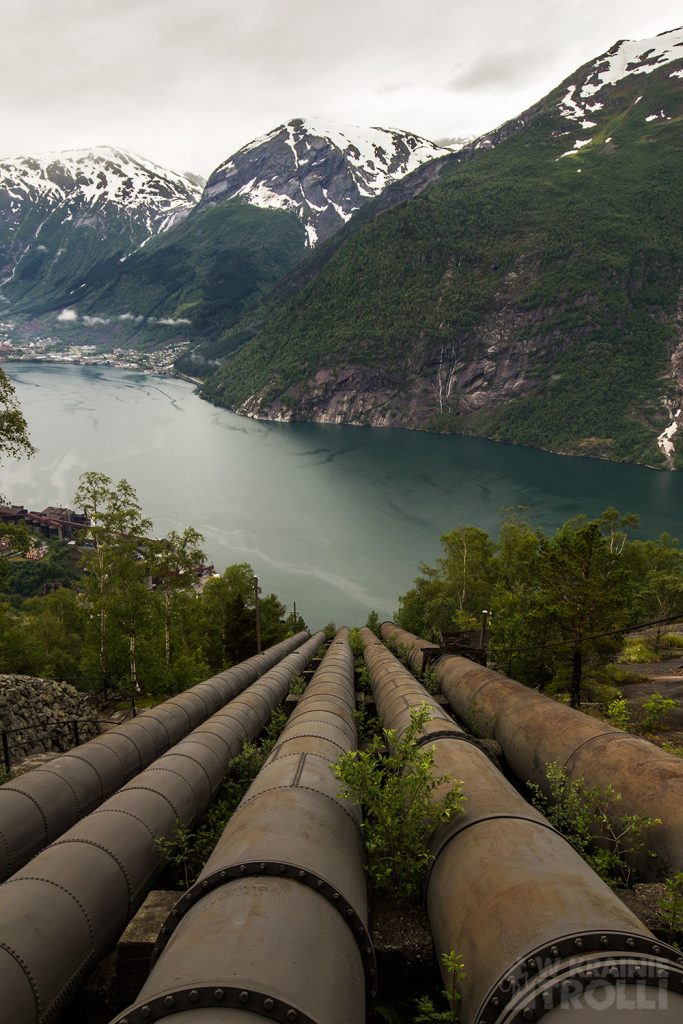
Tuż przy domku stróża znajdowały się strome schody a dalej prowadziła ścieżka wychodząca na nagą skałę. Tu spomiędzy drzew dostrzec można nie tylko Tyssedal i Oddę ale i ciągnący się na północ Sørfjorden. Musiałem przyznać rację przewodniczce, widoki były niesamowite. Nawet pomimo pochmurnego nieba. Zapowiadany deszcz zaczął padać, gdy już zacząłem zbierać się z Oksli na dół. Nim jednak dotarłem z powrotem na Lilletopp przestało padać. Ot cała prognoza pogody.
Podsumowując, wycieczka na Lilletopp to świetne zagospodarowanie czasu na jakieś dwie godziny lub dłużej. Dla tych, których interesuje historia i / lub technika, idealne miejsce i warto zapłacić za bilet, wejście do tuneli i budynków technicznych jest bowiem zamknięte dla zwykłych śmiertelników. Dodatkową atrakcją są oczywiście widoki tak z samego Lilletoppen jak i z położonego wyżej szczytu Oksli. Na Oksli należy zachować ostrożność i nie podchodzić zbyt blisko krawędzi. W deszczowe dni mokra skała może być śliska.
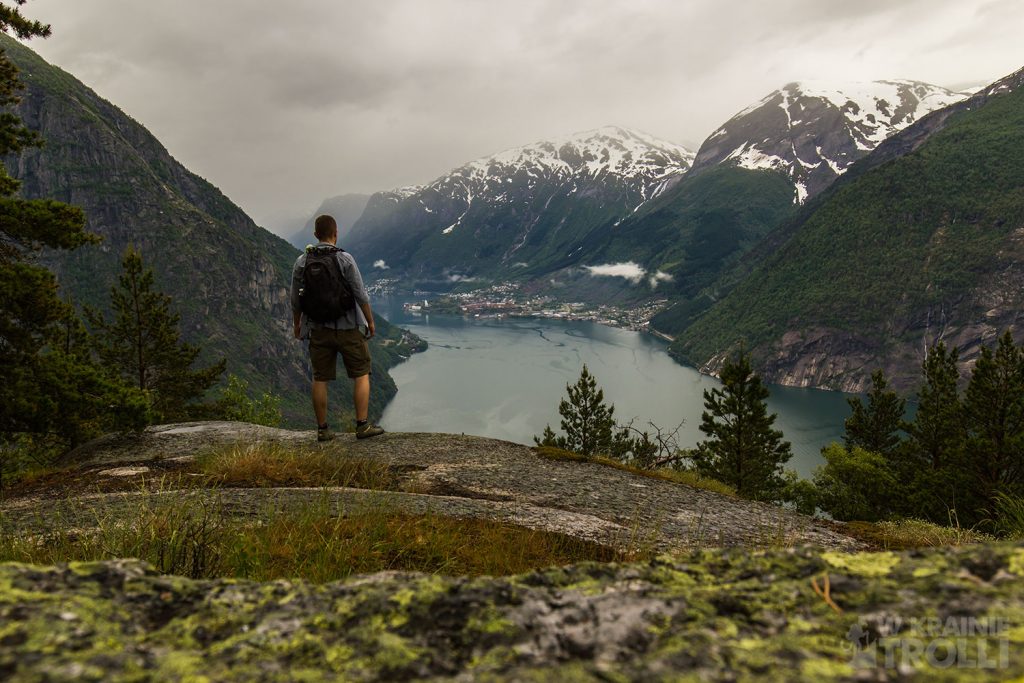
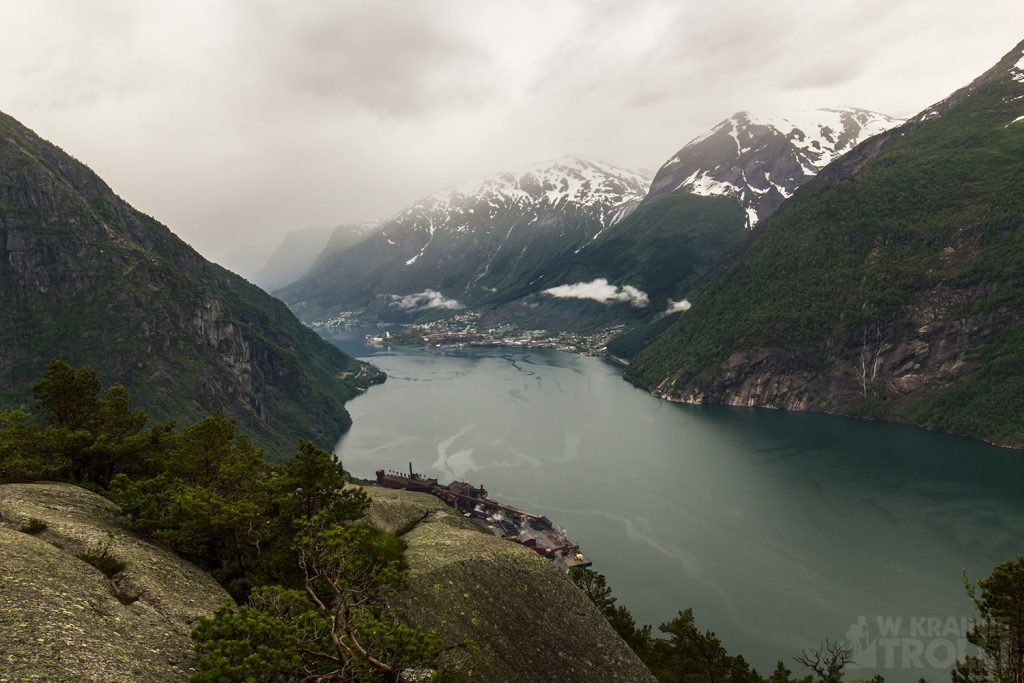
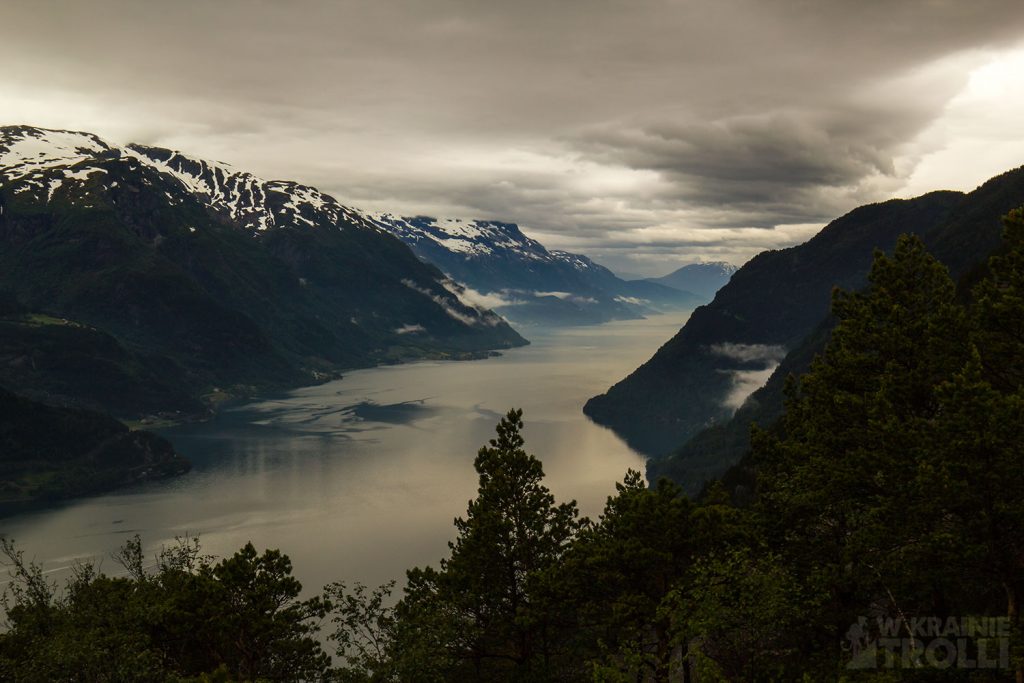
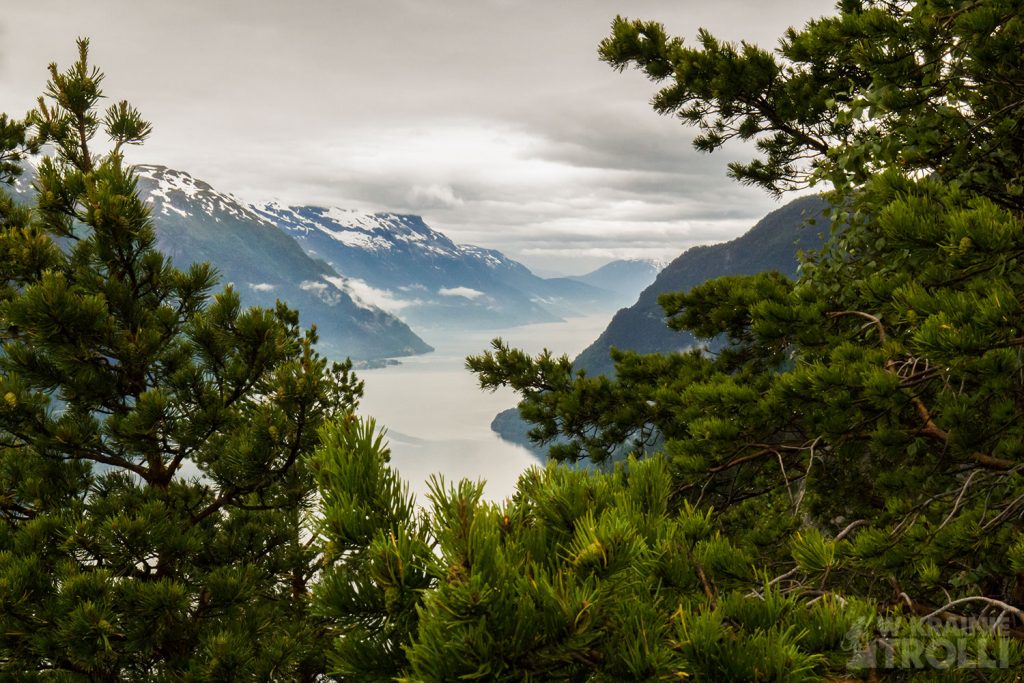
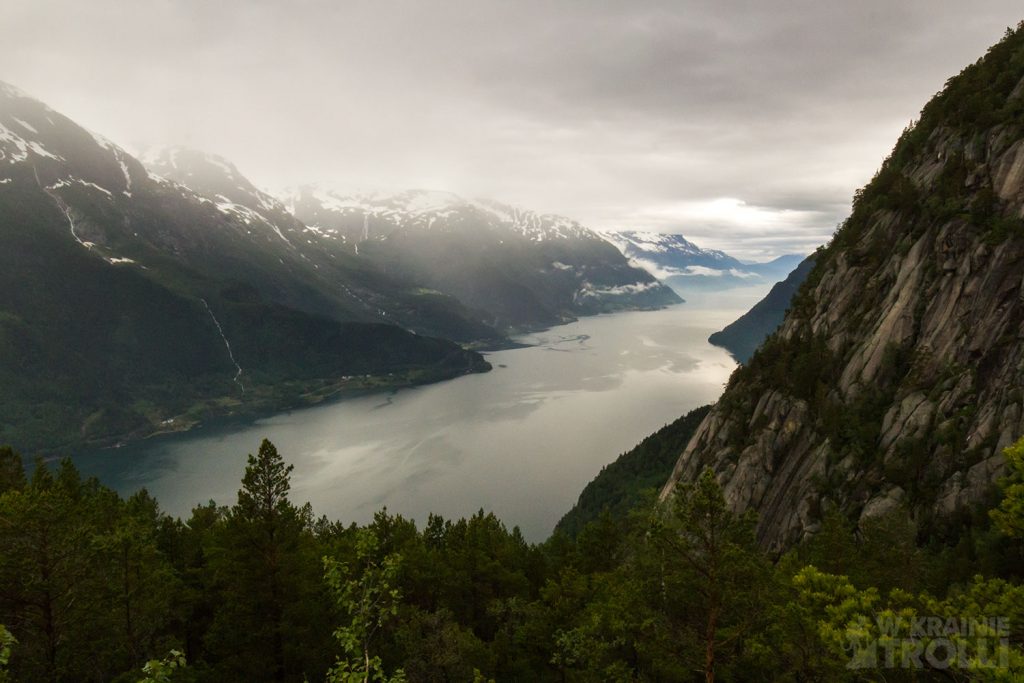

The visit to Lilletopp was the priority of my trip to Tyssedal. Before I started go up the hill, I went to the Tysso I museum where I got instructions how to get to the small parking lot. I also got a piece of paper entitling me to leave the car for free in the parking lot. The road is the same road which goes to the parking lot in front of the dam in Sjeggedal, from where you can reach the famous Troll Tongue. However, the parking lot on the trail to Lilletoppen is much lower. A small place can accommodate up to three cars, which one belongs to the guide at the top. As it was quite early and I was the first visitor, I had two other parking spaces at my disposal. An alternative is to leave the car lower in the parking lot in front of the Tyssedal sport hall and take a slightly longer walk.
For this short trip, I put on my feet Vibram FiveFingers shoes to test them in mountainous terrain. I have to admit that they worked perfectly and I could consider about much longer routes in this type of footwear. The trail itself is neither long nor demanding. The distance of about 3 kilometers can be done in about 30-40 minutes, walking along a well-maintained forest path, which sometimes runs in an open area on the rock. Thanks to this, you cannot complain about the lack of views along the way. At the top of the route, you reach the impressive transmission pipes that used to feed the water to the Tysso I Power Station years ago.
I finally got there. The final part of the trail runs parallel to the five pipelines that are come in a concrete dam beneath one of the technical buildings on Lilletopp. I went down to the cottage where the guard lived once. There I met a museum guide, who, after paying the ticket (60 kr), showed me the area around.
First I looked at the distribution basin from above, from where the water flowed through enormous gate valves into the pipelines on the slope and flowed to the power plant 400 meters below. The pool is a large hole, carved in the rock (probably with a little help of a lot of dynamite). At the bottom of the pool I could see the tunnel inlet leading directly from Lake Ringedal. We walked through the gallery by the pool and my guide handed me a helmet to protect my head while walking through the tunnel. At this point, we stopped for a moment, watching the panorama of the town below. Buildings, erected over one century earlier, during the works on power plant, still stood there, restored and now used by other residents. Even now, it was possible to distinguish the sumptuous residences of the directorate and administration from workers’ houses.
We walked past the cable car that used to be used to transport building materials. The guide informed me that the museum is trying to bring it back to life but they are struggling with insufficient financial resources.
We finally got to the tunnels. It was dark inside, but a string of lights hanging on one side allowed for safe movement. The route led along the distribution basin, which could be viewed from below this time. My guide told the story of the workers working in the tunnel. Their work was not the easy, but those who ended up here considered themselves as lucky ones. During the summer the tunnel was pleasantly cool inside, while in winter it was warmer than outside.
The last stage of the tour was to enter one of the transport pipes and reach the building with enormous gate valves. Before they became fully automatic, one man, a guard, had to operate them manually. The guard lived permanently in the next house with his family. You can guess that the kids weren’t very happy with the daily route from home to school in Tyssedal and back again. However, according to information on one of the boards at the power plant, they did not miss a single day of lessons.
We went out on the next gallery, this time just above the pipelines going one meter below, and thats was the end of our tour. I admit that I liked it very much. I gave the helmet back and a nice guide recommended me some great views from the Oksla hill, a dozen or so meters above Lilletopp.
There was a steep staircase next to the guard’s house and a path leading out onto a bare rock. Here, from the trees, you can see not only Tyssedal and Odda, but also Sørfjorden stretching to the north. I had to admit the guide was right, the views were amazing. Even despite the cloudy sky.
A trip to Lilletopp is a great time investment for two hours or more. For those who are interested in history and / or technology, an ideal place and worth paying for a ticket, because the entrance to the tunnels and technical buildings is closed for free visitors. An additional attraction are of course the views from both Lilletoppen and the Oksla peak located above. On Oksla, be careful not to get too close to the edge. On rainy days, wet rock can be slippery.



